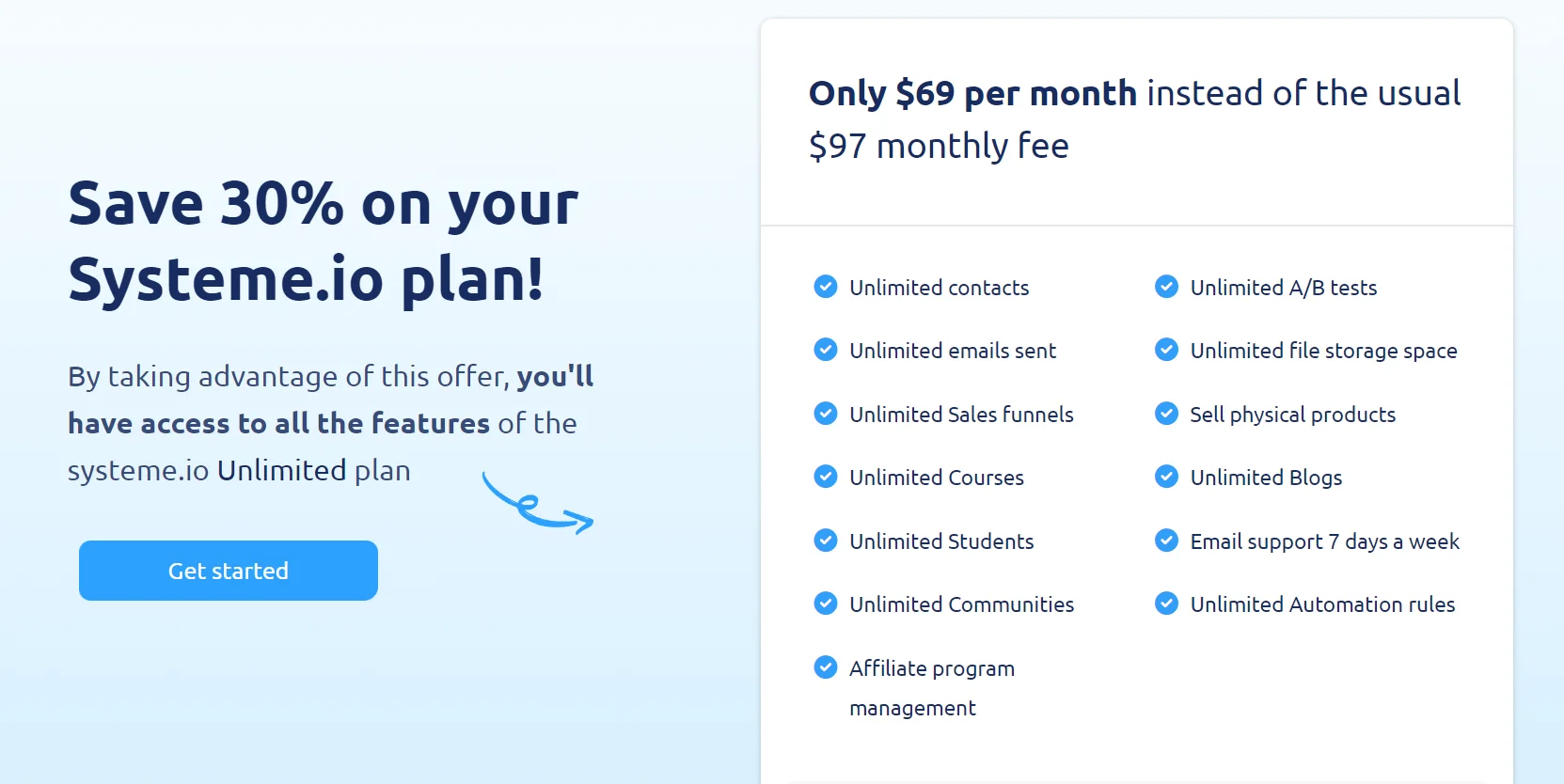Choosing to niche down in your business strategy can be a transformative decision. Identifying a specific niche allows you to focus your efforts and resources on a particular market segment.
It’s about becoming an expert in a specialized area rather than casting a wide net. By doing so, you address the needs of a targeted audience more effectively than competitors who remain broad, which often results in a stronger brand and customer loyalty.
Now, narrowing your focus requires understanding both your strengths and the particular needs of your potential customers.
Once these needs are identified, you can tailor your products or services to meet them closely, thereby carving out a unique position in the market.
A solid niching down strategy isn’t just about exclusion; it’s about concentrating your efforts on a segment of the market where you can compete most effectively.
By committing to a niche, you enhance your visibility and authority, which enables you to command higher prices, develop deeper customer relationships, and ultimately increase profitability.
- Understanding your niche
- Building expertise
- Effective marketing strategies
- Growing your customer base
- Measuring success and pivoting
- Establishing your brand
- Nicheing down (FAQs)
- What are the steps to narrowing down a business niche effectively?
- Can you provide guidance on finding my niche on social media platforms like TikTok?
- In what ways does niching down impact business growth and customer engagement?
- How can I identify the most profitable niche for my business?
- What strategies can I employ to successfully niche down my audience?
- What are common mistakes to avoid when attempting to niche down in a particular market?
Understanding your niche

Before diving into the specifics of your niche, it’s crucial to assess who your target audience is, explore the demand within the market, and define what sets your offering apart.
This focused approach ensures you address the specific needs, desires, and challenges of your market effectively.
1) Identifying your target audience
Your target audience is the foundation of your niche.
Start by gathering data on demographics — age, location, gender, income level, education, and occupation.
Then, layer in psychographic details like interests, values, and lifestyle.
By aligning this information with your potential customers’ pain points, you are better positioned to serve them.
Demographics:
- Age
- Location
- Gender
- Income
- Education
- Occupation
Interests & Values:
- Hobbies
- Preferences
- Lifestyle choices
Identifying these aspects allows you to tailor your message and connect with your audience on a deeper level.
2) Analyzing market demands
Understanding the specific market demands involves thorough research.
Look for patterns of pain points and demands that are not currently met by existing providers.
Conduct surveys and hold interviews with potential customers to get firsthand insights.
The goal is to define a unique segment that is both underserved and eager for solutions.
- Conduct market analysis:
- Look for unmet needs
- Analyze competitors
- Understand trends
3) Defining your unique value proposition
Your unique value proposition (UVP) is the statement that succinctly describes the benefits that only you offer.
It should speak directly to the pain points of your target market, explaining how your product or service solves their unique problem.
Here, specificity is key — avoid vague language and focus on the concrete value you provide.
- UVP components:
- What you offer (product/service)
- Who you serve (target audience)
- How you solve problems (benefits)
- Why you’re different (unique differentiators)
Building expertise

To niche down effectively, you must cultivate a deep reservoir of knowledge and a reputation as an expert. The process involves honing your skills and establishing your authority in the field.
Developing core skills
Your journey to becoming an expert starts with the mastery of core skills.
To assess and improve your abilities, create a structured plan with specific goals.
Identify essential skills:
- Research your niche to uncover critical competencies.
- List down the skills you need to work on.
Set skill development milestones:
- Define clear, achievable objectives.
- Track progress and adjust your plan as necessary.
Engage in continuous learning:
- Take advantage of online courses or workshops.
- Read the latest industry literature to stay updated.
More than just theory, apply what you learn in practical scenarios. Real-world experience solidifies your expertise and prepares you for complex challenges.
Establishing thought leadership
Becoming a thought leader requires more than just knowledge; it’s about contributing to and shaping the discourse in your niche.
Share valuable insights:
- Write articles or blog posts that address common industry challenges.
- Participate in speaking engagements or webinars.
Engage with your community:
- Join industry groups or forums and actively contribute to discussions.
- Offer your expertise to help others and foster relationships.
By consistently providing valuable insights, you signify not only your expertise but also your dedication to the field. It’s this combination of depth and engagement that anchors your status as an authority.
Effective marketing strategies
In niche marketing, the key is to effectively leverage tools and strategies that reach your specific audience with clarity and precision.
Your marketing strategy should be multi-faceted, focusing on channels and messaging that resonate with your target market.
Leveraging social media and content marketing
To optimize your presence in a niche market, your social media strategy should be intentional and targeted.
Use platforms where your audience is most active and engaged.
Incorporate blogs and podcasts that allow you to offer valuable content that caters to specific interests.
This, in turn, solidifies your position as an authority within your industry.
- Identify the platforms: Where do your ideal customers spend their time? Is it Facebook, LinkedIn, Twitter, Instagram, or elsewhere?
- Custom content: Tailor your content to answer the unique concerns and needs of your market. Whether it’s blog posts, podcasts, or videos, your content should provide value and encourage interaction.
Clear brand messaging
Your marketing message is the core of your communications. It must be clear, concise, and articulate the unique value proposition of your niche.
- Define your value: What specific benefits do you offer that competitors don’t? Ensure that your target audience understands this distinct advantage.
- Consistency is key: Maintain a consistent tone, language, and messaging across all your marketing materials to build recognition and trust.
Growing your customer base
Optimizing your approach to growing your customer base hinges on understanding who your customers are and effectively tailoring your marketing efforts to reach them.
By crafting a detailed customer persona and launching targeted campaigns, you can drive sales and foster a robust, dynamic customer base.
Creating a customer persona
Your ideal customer — the heart of your business — is not just a demographic. You’ll need to develop a customer persona, a composite sketch of your prospects that details their needs, interests, and pain points.
Start by collecting data from your current customer base and market research.
- Demographics: Age, gender, income level, education
- Psychographics: Values, interests, lifestyle, personality
- Behavioural patterns: Shopping habits, product usage, spending power
Use these insights to refine your product/service offering and marketing message, ensuring you cater to your leads with precision.
Driving sales through targeted campaigns
Once you have your customer persona, it’s time to engage them with targeted campaigns. Use segmentation to divide your larger market into smaller, more manageable groups. This implements the STP model, which stands for Segmentation, Targeting, and Positioning.
Campaign steps:
- Identify opportunities: Pinpoint gaps or niches in your market where your product excels.
- Customize your messaging: Speak directly to your persona’s preferences and problems.
- Choose the right channels: Whether it’s social media or email marketing, use the platforms where your ideal customers are most active.
- Track and analyze: Always measure the effectiveness of your campaigns in generating leads and converting sales. Adjust as necessary.
By maintaining this approach, you can cultivate your customer base not just with numbers, but with individuals primed for your brand, fostering growth and loyalty.
Measuring success and pivoting

To niche down effectively, one must measure success through key performance indicators and have the agility to pivot in response to market changes. This fosters better positioning against competitors and reinforces branding efforts.
Setting and reviewing Key Performance Indicators (KPIs)
Your business’s success is often quantifiable by the revenue it generates and its profitability. It’s essential to set specific KPIs that align with your business goals.
For instance, if you’re looking at branding, you may track social media engagement or brand mentions. In terms of revenue, monthly sales figures provide a clear indicator.
These KPIs must be reviewed regularly to determine if your niche strategy boosts your credibility and offers the benefits you’ve aimed for.
- Monthly Revenue Growth
- Customer Acquisition Costs
- Customer Lifetime Value
- Social Media Engagement Rates
- Brand Mentions
Adapting to market changes
Market shifts demand your adaptability. If your KPIs indicate a downward trend, consider a pivot to remain competitive. Evaluate your positioning — how you stack up against your competitors, and determine if a shift could lead to greater profitability.
A successful pivot requires a comprehensive understanding of your niche market, updating products or marketing strategies to better align with customer needs, and maintaining transparent communication to sustain your brand’s credibility.
- Monitor industry trends
- Assess customer feedback
- Revisit competitor strategies
- Redefine your value proposition
Establishing your brand
When venturing into the world of business, your brand is the cornerstone of your engagement with customers. As you niche down, it becomes imperative to infuse your brand with both your passion and experience.
This serves not just as a foundation but also as a beacon that shines through your services or products, setting you apart from the competition.
Begin by considering what you’re passionate about and how your past experiences can inform your business approach. Authenticity resonates with customers, so your brand’s ethos should be a reflection of your true self.
A brand that encapsulates your genuine interests will likely be more coherent and engaging.
Focus next on conveying your brand through various touchpoints:
- Design: Partner with a designer for a visual identity that communicates your brand’s essence. Think logos, color schemes, and typography.
- Messaging: Sharpen your brand’s voice with consistent copywriting that speaks directly to your niche. This could be done in-house or by hiring a full-service agency.
- Experience: Offer an experience that aligns with your brand, something that clearly showcases the unique value you provide.
Nicheing down (FAQs)
Navigating the intricacies of niche marketing is integral for honing in on your target audience. These FAQs will provide clarity on refining your business focus for effective targeting and engagement.
What are the steps to narrowing down a business niche effectively?
To effectively narrow down your business niche, begin by identifying your interests and expertise, and understanding your target audience’s needs. Then, assess the competitive landscape and test your niche to ensure it’s viable.
Can you provide guidance on finding my niche on social media platforms like TikTok?
To find your niche on platforms like TikTok or Instagram, analyze trending content and hashtags related to your business field. Observe the communities engaging with this content and tailor your social media strategy to resonate with them.
Creative and relatable content often succeeds on TikTok, so infuse your personal style to stand out.
In what ways does niching down impact business growth and customer engagement?
Niching down allows for a more focused marketing strategy, which can lead to higher conversion rates and customer loyalty. It enables you to build a strong brand identity and become an authority in your specific area, which is key to business growth and customer engagement.
How can I identify the most profitable niche for my business?
To identify the most profitable niche, conduct market research to detect unserved or underserved areas within your industry. Look for trends, demands, and gaps in the market.
Profitable niches often have high customer demand but low competition, with customers willing to pay for specialized solutions.
What strategies can I employ to successfully niche down my audience?
Successful strategies for niching down your audience include creating detailed buyer personas, offering tailor-made solutions, and leveraging data from customer feedback and market analysis. Engage in community building within your niche to foster a dedicated clientele base.
What are common mistakes to avoid when attempting to niche down in a particular market?
Common mistakes to avoid include niching down too hastily without adequate research. Also, make sure to avoid ignoring the competition and failing to adapt to market changes.
Avoid overlooking the importance of customer feedback. Be wary of targeting too narrow of an audience that may not sustain your business long-term.



